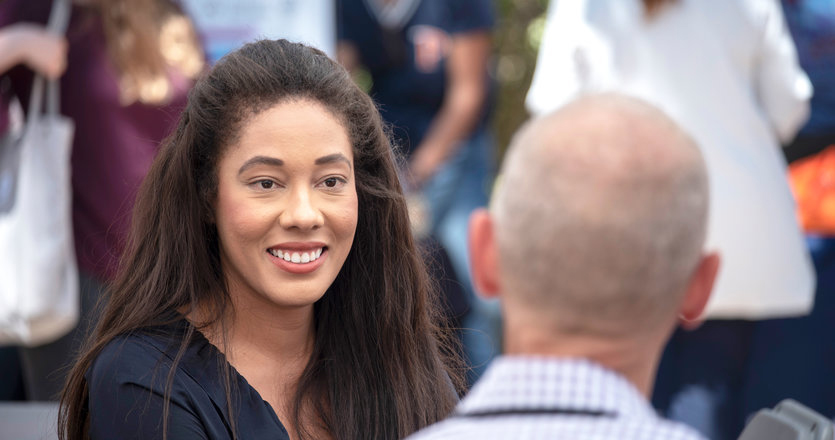The Power of Cultural Diplomacy: Building Bridges

In the ever-changing world of international relations, the usual political and economic talks are now complemented by equally an impactful player: cultural diplomacy.
Simply put, cultural diplomacy is all about building bridges. It's about understanding one another better, narrowing the gaps between our cultures, and creating stronger ties between countries by sharing and celebrating our arts, cultures, and education.
It has the potential to touch individuals in ways traditional diplomacy might not, creating lasting, positive impressions.
Understanding Cultural Diplomacy
When we explore the rich landscape of international relations, we uncover a multitude of tools and techniques that nations employ to engage, negotiate, and build relationships with each other. Among these, cultural diplomacy stands out as a unique and compelling instrument. But what precisely does it entail, and why has it gained such traction in modern diplomacy?
The Essence of Cultural Diplomacy
Cultural diplomacy is like weaving a tapestry of connections between countries using the vibrant threads of their unique and shared cultural stories. It goes beyond just showcasing one nation's music, art, or literature to the world. Instead, it opens up a heartfelt conversation, a mutual dance where each participant learns, evolves, and flourishes. Through these cultural interactions, nations can showcase their identity, share their stories, and highlight the values they cherish.
While traditional diplomacy often revolves around incentive, power, and alliances, cultural diplomacy relies on the power of attraction, co-option, and the appeal to other nations’ cultures, political ideals, and policies.
The Historical Significance of Cultural Diplomacy
When we look back through the pages of history, we find that cultural diplomacy isn't a new idea. Instead, it stands as a timeless tribute to our human ability to connect, overcoming the challenges of distance, language, and political divides.
From the days of old, people from various civilizations have leaned on the arts, education, and shared customs to nurture a sense of mutual understanding and appreciation. The historical journey of cultural diplomacy offers invaluable insights, tracing back to early civilizations and evolving in step with the course of global events.
Legacy and Lessons
Reflecting on the historical significance of cultural diplomacy, several lessons emerge:
- Mutual Respect: Whether it's the scholars of Baghdad preserving ancient wisdom or Renaissance artists influencing European thought, history underscores the importance of mutual respect in all cultural exchanges.
- Inclusivity: True cultural diplomacy seeks to understand and include, rather than dominate or erase. The missteps of the colonial era offer a cautionary tale about the consequences of cultural hegemony.
- Adaptability: As times have changed, so too have the methods and mediums of cultural diplomacy, from the Silk Road merchants to the digital influencers of today. Adaptability ensures the continued relevance of cultural diplomacy.
- Beyond Politics: While political contexts have undeniably shaped cultural diplomacy, its essence lies in human connection, often thriving despite political constraints.
Case Study: Cultural Exchange Programs
The tapestry of international relations is interwoven with threads of various hues, representing diplomacy's different facets. While economic and political interactions form its core, to truly grasp the potency of cultural diplomacy, one need not look further than the transformative power of cultural exchange programs.
A cultural exchange program is truly a journey, not just across borders, but also of the soul. Diving headfirst into a world where even the way people greet or the food they eat feels different, participants get a taste of a life they've never known, yet somehow feel familiar. But as days turn to weeks and weeks to months, what starts as unfamiliar soon becomes a second home. And this journey, filled with revelations and relationships, can reshape perspectives for a lifetime.
The Fulbright Program: Seeds of Understanding
Take for instance the Fulbright Program, created in 1946 thanks to the vision of Senator J. William Fulbright. He pictured a world where people from the U.S. and elsewhere truly understood one another. For years, this program has acted like a bustling crossroad, allowing students, academics, and professionals from all over to come together, share stories, and grow from their shared experiences.
The stories emanating from this program are profound. A scholar from Vietnam, researching sustainable agriculture in the US, returns home with innovative ideas and newfound friends. An American artist, after a sojourn in the heart of Africa, integrates tribal motifs into her work, introducing her audience to a world they might never have known.
Such narratives underscore the program's impact, transcending academic and professional growth to touch the realms of personal transformation and cross-cultural bonding.
Beyond Academia: The Ripple Effects

Why Cultural Diplomacy Matters in the Modern World
In an era defined by rapid technological advancements, instantaneous communication, and unprecedented mobility, one might pose the question: Does cultural diplomacy still hold relevance? The resounding answer is 'yes'. Now, more than ever, cultural diplomacy serves as the bridge between nations, fostering understanding in a world rife with complex challenges and ever-shifting dynamics.
Today’s challenges – be it poverty, global health crises, or geopolitical tensions – require collective action. Trust and cooperation become paramount. Through programs of cultural exchange, nations can build and nurture the necessary trust.
When policymakers, artists, or scholars from different parts of the world come together, they not only share knowledge but also foster a spirit of collaboration, essential for addressing the pressing issues of our time.
A Counterbalance to Polarization
In many regions of the world, we witness a rising tide of nationalism and polarization. Cultural diplomacy serves as a counterbalance. By highlighting shared human experiences and values, it reminds us of our common humanity, reducing feelings of 'otherness'. Art exhibitions, musical performances, and literary festivals can resonate universally, forging bonds that transcend political or ideological divides.
The Role of Cultural Institutions in Cultural Diplomacy
Cultural diplomacy, while deeply rooted in history and tradition, owes much of its enduring appeal and efficacy to the stewardship of specific entities: cultural institutions. These repositories of art, heritage, and knowledge serve as both guardians and ambassadors of culture, enabling civilizations to weave intricate bonds of mutual respect and admiration. Among these are museums, art galleries, theaters, and libraries. They are vibrant venues for dialogue and discovery. The British Museum in London, the Louvre in Paris, and the Metropolitan Museum of Art in New York do more than display treasures from around the world; they narrate tales of shared human experiences, creativity, and resilience across time and space.
Beyond Walls: Outreach and Engagement
The role of cultural institutions isn't static or confined within their physical boundaries. They constantly reinvent and expand their sphere of influence. Programs like traveling exhibits, international art collaborations, or cultural exchange initiatives enable these institutions to reach global audiences.
When the Smithsonian hosts an exhibit on Ancient Chinese Dynasties or the Bolshoi Ballet tours internationally, it's more than entertainment – it's an invitation to engage, to learn, and to appreciate.
Educational Endeavors
Universities and educational institutions have been unsung heroes in the realm of cultural diplomacy. These citadels of learning often host diverse student populations, encouraging cross-cultural interactions. Exchange programs, international seminars, and globally-focused curricula position these institutions as bridges between cultures. The interactions here often seed lifelong connections and mutual respect among the future leaders and thinkers of the world.
Cultural Diplomacy in International Relations: Bridging the Practical Divide
While the allure of cultural diplomacy lies in its celebration of shared human experiences and mutual understanding, its practical applications in international relations cannot be understated. Beyond the realm of art exhibitions and educational exchanges, cultural diplomacy actively shapes the policies, negotiations, and politics that govern our interconnected world.
Negotiation and Conflict Resolution
In the complex world of international diplomacy, cultural understanding often stands as the key to fruitful negotiations. It goes beyond simply sharing a language; it involves grasping the nuances, the unsaid meanings, and the cultural sensitivities that lie beneath the surface. When diplomats from diverse backgrounds gather around the negotiating table, cultural diplomacy steps in as a mediator, smoothing out differences and nurturing an environment built on trust.
Imagine going back to 1978 and diving into the Camp David Accords. In those momentous discussions, the bond formed between Egyptian President Anwar Sadat and Israeli Prime Minister Menachem Begin over their shared cultural and historical knowledge was key.
Their deep appreciation of each other's backgrounds was essential in shaping the agreements that came out of those conversations. The subtle acknowledgment of each other's cultural and historical narratives created an environment conducive to compromise and agreement.
Policymaking and Soft Power
In the realm of policymaking, cultural diplomacy often transforms into a tool of 'soft power'. Governments leverage their cultural exports – be it cinema, literature, or sports – to shape global perceptions and further their diplomatic objectives. Think about the way Hollywood, through its movies showcasing American life and values, has left a lasting impression worldwide, gently influencing how people see the US from afar.
Similarly, countries see teaching their languages as a way to share a piece of their culture with others. Places like the Alliance Française, the British Council, and the Goethe-Institut aren't just about language lessons; they offer a deeper dive into the heart of their respective cultures. They're gateways to truly grasping the culture and essence of the countries they come from.
Public Diplomacy: Hearts and Minds
In our modern world where news travels in a heartbeat, what people think can greatly impact global relations. Public diplomacy, a cornerstone of cultural diplomacy, aims to connect with individuals on a personal level. It's all about sharing stories, diving into cultural adventures, and forging genuine relationships.
Think about the Peace Corps as an example. Beyond its primary mission of sending volunteers to engage in development projects, it also assumes the role of cultural ambassadors. These volunteers work on dispelling stereotypes and painting a positive image of the United States in the regions they serve.
Similarly, the British Council, through its global educational programs, extends its reach beyond teaching English. It also offers valuable insights into British culture and values, thereby fostering cross-cultural understanding.
Political Collaboration and Crisis Management
Even in the most contentious of political landscapes, cultural diplomacy can foster collaboration. The Joint Comprehensive Plan of Action (JCPOA), more commonly known as the Iran Nuclear Deal, wasn't solely born from technical negotiations; it also marked a significant victory for the realm of cultural diplomacy.
By understanding Iran's historical pride in its nuclear program and acknowledging its aspirations, the negotiating parties paved the way for an agreement.
Moreover, during times of crisis, cultural diplomacy can act as a stabilizing force. Track II diplomacy, which involves non-official, often cultural, exchanges between conflicting parties, has played an instrumental role in conflict resolution. These informal dialogues create channels of communication when official lines are blocked.
Make a Lasting Impact
Are you deeply interested in global events, cultural nuances, and the strength of human connections? Do you imagine a world where countries unite, not solely via political avenues, but through mutual cultural experiences?
If so, the Master of Public Policy at Pepperdine School of Public Policy might be the stepping stone you need.
Pepperdine University recognizes the ever-growing significance of cultural diplomacy in international affairs. Through the Master of Public Policy program, students are equipped with the knowledge and skills necessary to become leaders in this fascinating intersection of culture and diplomacy.